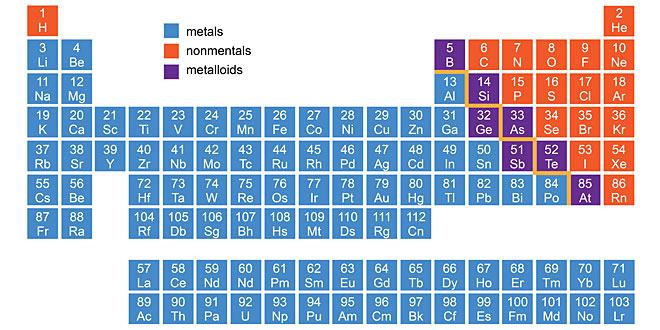NCERT 10th Class (CBSE) Science: Work, Life and Leisure Quiz
20 Multiple Choice Questions related to NCERT 10th Class (CBSE) Science (Chemistry) Metals and Non-metals Quiz
- Elements can be classified as metals and non-metals.
- Metals are lustrous, malleable, ductile and are good conductors of heat and electricity. They are solids at room temperature, except mercury which is a liquid.
- Metals can form positive ions by losing electrons to non-metals.
- Different metals have different reactions with water and dilute acids.
- A list of common metals arranged in order of their decreasing reactivity is known as an activity series.
Your Score:
Your Ranking:
Metals and Non-metals Quiz Summary
Elements are divided mainly into two groups on the basis of physical and chemical properties – Metal and Non-metal.
Physical Properties of Metals:
Hardness: Most of the metals are hard, except alkali metals, such as sodium, potassium, lithium, etc. Sodium, potassium, lithium etc. are very soft metals, these can be cut using knife.
Strength: Most of the metals are strong and have high tensile strength. Because of this big structures are made using metals, such as copper and iron.
State: Metals are solid at room temperature except mercury.
Sound: Metals produce ringing sound, so, metals are called sonorous. Sound of metals is also known as metallic sound. This is the cause that metal wires are used in making musical instruments.
Conduction: Metals are good conductor of heat and electricity. This is the cause that electric wires are made of metals like copper and aluminium.
Malleability: Metals are malleable. This means metals can be beaten into thin sheet. Because of this property iron is used in making big ships.
Ductility: Metals are ductile. This means metals can be drawn into thin wire. Because of this property wires are made of metals.
Melting and boiling point: Metals have generally high melting and boiling points.
Density: Most of the metals have high density.
Color: Most of the metals are grey in color. But gold and copper are exceptions.
Chemical Properties of Metals
Reaction with oxygen:
Most of the metals form respective metal oxides when react with oxygen.
Metal + Oxygen ⇨ Metal oxide
Examples:
Reaction of potassium with oxygen: Potassium metal forms potassium oxide when reacts with oxygen.
4K + O2 ⇨ 2K2O
Reaction of sodium with oxygen: Sodium metal forms sodium oxide when reacts with oxygen.
4Na + O2 ⇨ 2Na2O
Lithium, potassium, sodium, etc. are known as alkali metals. Alkali metals react vigorously with oxygen.
Reaction of magnesium metal with oxygen: Magnesium metal gives magnesium oxide when reacts with oxygen. Magnesium burnt with dazzling light in air and produces lot of heat.
2Mg + O2 ⇨ 2MgO
Reaction of aluminium metal with oxygen: Aluminium metal does not react with oxygen at room temperature but it gives aluminium oxide when burnt in air.
4Al + 3O2 ⇨ 2Al2O3
Reaction of zinc metal with oxygen: Zinc does not react with oxygen at room temperature. But it gives zinc oxide when heated strongly in air.
2Zn + O2 ⇨ 2ZnO
Reaction of Iron metal with oxygen: Iron does not react with oxygen at room temperature. But when iron is heated strongly in air, it gives iron oxide.
3Fe + 2O2 ⇨ Fe3O4
Iron fillings give sparkle in flame when burnt.
Reaction of copper metal with oxygen: Copper does not react with oxygen at room temperature but when burnt in air, it gives copper oxide.
2Cu + O2 ⇨ 2CuO
 Class Notes NCERT Solutions for CBSE Students
Class Notes NCERT Solutions for CBSE Students





